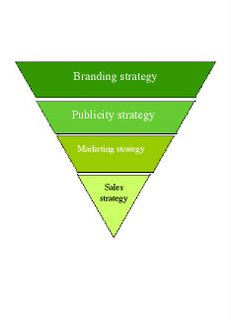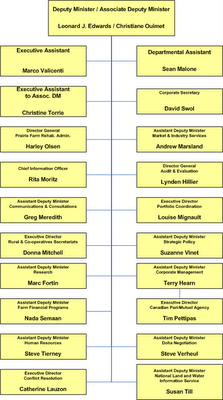Recently, I was invited to address the Ottawa Chamber of Commerce on the subject of using public relations to build business profile. I was quite happy with the results and noticed many taking notes. For your review, I have taken the liberty of enclosing the text of my address. Please feel free to ask any questions you like as some points may not be self-evident without the benefit of the powerpoint slides used.
''If you’re looking to take your business to the next step, publicity and marketing are I’m sure – a consideration most of you reflect on regularly. We all know that those who are famous can leverage their notoriety for the benefit of a business or cause.
One only has to think of George Forman and his well known grills or Jerry Lewis and his well known telethons.
But for the rest of us, I’m reminded of a quote by a US historian, Daniel Boorstin:
‘’Some are born great, some achieve greatness, and some hire public relations officers.’’
My purpose here today is to get you thinking of your marketing and business in a different light.
In fact, this morning, I want you thinking of your 2006 – 2007 plans for publicity.
I’m asking you this because I’m making an assumption. I’m assuming you’re all interested at one level or another in growing your business.
Many of you are equally aware of the importance of building credibility and a reputation. You know that somewhere down the line, this impacts on your success.
GOOD MARKETING AND PUBLICITY IS WHAT CREATES BUYERS AND SOMETIMES EVEN CLOSES SALES.
Especially, in industries where sales cycles are longer or reputation closes the deal.
Yet, despite what seems the obvious, I’ve heard stats saying that as few as 10% entrepreneurs in Canada feel they have an effective brand strategy.
This tells me that there’s a lot needing to be done in educating entrepreneurs on the path of unknown quantity to glowing success.
Today, I’m going to lay out three important arguments for your consideration.
First, most of you have heard of sales funnels. Today, I’m going to speak to you about marketing funnels. They are essentially what eventually make sales funnels possible.
Second, I’m going to explain why public relations should be an integral part of your business.
Third, I’ll detail some of the ways you can draw greater public attention to the great work you do.
The latter is why I like to call myself a magnifier. I’ve made it my mission to magnify the talents of under appreciated professionals in the eyes of their market.
Regrettably, very few businesses, organizations or even charities take the first necessary steps towards setting themselves apart.
In other words, building a longstanding and well-known brand. As I mentioned earlier, only 10% of entrepreneurs take an active role in the branding process.
But a brand is only the first step in converting prospects!
Many confuse marketing with sales as they do with marketing and publicity.
In fact, they are all very different and require a separate strategy for each.
(bring up pyramid slide)

(this slide was used to describe where PR fits into converting the general public into buying customers)
To often, I’ve seen potentially successful people give up to soon or continue in a single direction without a plan. In truth, if they had simply viewed these blocks as the key to their long-term growth, they would be much further ahead.
Virgin CEO Richard Branson stated once, "Branding is important. If you get your face and your name out there enough, people will start to recognize you.
Many people know the Virgin brand better than the names of the individual companies within the group. A young girl once came up to me and told me I could be famous because I looked just like Richard Branson!"
But you see there is something prophetic in this.
Once you have decided on the brand you’re looking to put forward, you have got to take the necessary steps to make in known.
For purposes of this session, we’ll focus on publicity or better known as public relations.
Many have asked me: ‘‘what is Public Relations?’’ Others ask, ‘‘why would I use it?’’
(bring out reasons slide)
Well, here’s ten possible reasons…
Still not convinced? How many here have heard of KPMG?
For those who haven’t, KPMG provides audit, tax and advisory services.
Their success depends on the quality of the consultants they are able to recruit. As such, it should be of no surprise that one of their main branding objectives is to be recognized as an employer of choice.
All their marketing backs up this message but what is interesting to note is that they also have an aggressive PR campaign to compliment the message.
They strategically pick the trade shows at which they present and work with polling companies to release interesting human resources stories to the media.
They link their strategy from the top down.
Both Westjet and Starbucks are known for getting to the position they are in not necessarily just from advertising but rather good public relations.
In the case of Starbucks, they long ago got onto the bandwagon of fair trade coffee.
Ladies and Gentlemen, these are very successful organizations.
Now at this point, I’m going to ask many of you to drop the regular shyness most have in terms in front of large groups.
I’m going to do a quick poll.
How many of you have a business plan? From this group, how many of you have a marketing plan? (asking to keep hands up)
How many of you have a publicity or Public Relations plan?
This is not surprising!
Yet, without a roadmap, how will you know where you’re going and if you’ve achieved any benchmarks?
More importantly, how will you know if the publicity you’re receiving fits in with your marketing objectives?
So, the first thing to do is set to work on a communications plan.
Here are the essential elements (break out next slide):
Think of your plan according to the RACE formula
RESEARCH – what’s going on in your industry?
• Think of every possible story angle from which you could pitch story ideas to the media
• Research your target market. What is it about them that’s interesting?
ANALYZE – What kinds of activities are most likely to appeal to your identified market? What trends are likely to occur in the next 5 years?
• How will you approach them? Will it be through:
o Media?
o Tradeshows?
o Events?
o Articles?
o Sponsorships & Charities?
o Speaking Tours?
o Traditional advertising?
o Online PR and blogging?
This stage of the process is very important.
COMMUNICATE – once you’ve analyzed the environment, it’s only then that you get down to communicating.
• Who will speak for your organization and when?
• What procedures will you have in place with your staff when the press does come calling?
• What are some of the techniques you will use?
o (Pull out Chases Calendar of Events) Is there anything you can say about yourself that’s interesting? Use the media as a friend. Remember, the exchange is simple:
ß You give good story, they give you free publicity
ß Find an interesting anecdote on the calendar and pitch your expertise on the subject to the journalist responsible for a given beat
ß Keep tabs on the stories covered by every journalist you can and build relationships. Don’t be afraid to call them up if AND IF you think there is a genuine story. Don’t be afraid of bothering them and be patient
• (Point to Leo’s quote on slide)
• (Next- point to Mike) Just as in networking, it’s about building relationships
(Switch to RACE slide)
o Are there trade shows you can tour?
o Ever thought of getting involved in or sponsoring a charity? I am sure many of you do. But how many of you have a corporate giving strategy?
The bottom line is – GET CREATIVE!
EVALUATE:
So you’re getting publicity…
Is it working?
How will you know?
Develop your strategy to include focus groups, polling or even review if the natures of the clippings you’ve received are more or less positive than when you started the campaign.
Remember, your image is everything. Everything you do or say is public relations.
My message is essentially that as entrepreneurs and leaders in associations and organizations –
You need to think of marketing and publicity in separate lights. They are all essential and need to be done simultaneously
My most important message to you is that it is never too late to build a public relations plan. Put it into place for 2006-2007
The result will be a roadmap for your brand and your prosperity.
You notice an empty plate in front of you. It represents a clear slate for your reputation. In other words, a fresh opportunity to build a name for yourself
To do this, you need to be equipped with knowledge
By dropping your business card on this plate, I’m offering you a free subscription to my monthly newsletter on tips for building your marketing and PR efforts
Now imagine if after 12 months you were able to implement just 12 publicity ideas, where would your organization be positioned?''
___________
Mark Buzan is the owner of Action Strategies, a public affairs and marketing communication consultancy. He has developed stellar marketing plans for numerous clients. You can subscribe now to his monthly PR & Marcomm tips newsletter by visiting www.action-strategies.ca and dropping down the newsletter menu.









